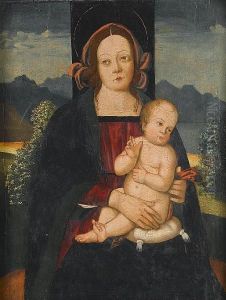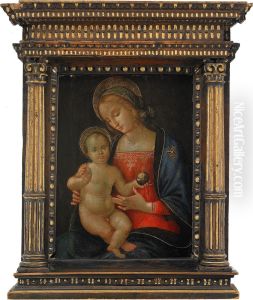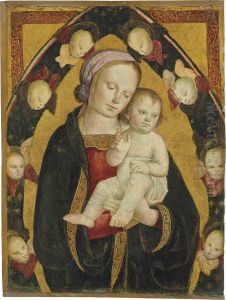Antonio Pastura Del Massaro Da Viterbo Paintings
Antonio del Massaro, also known as Pastura, was an Italian painter of the Renaissance period, born in 1499 in Viterbo, a town in central Italy. He is sometimes referred to as Antonio da Viterbo or Antonio da Viterbo il Vecchio to distinguish him from other artists with similar names. His nickname, 'Pastura', is believed to be derived from his father's occupation, which was related to pastoral activities.
Antonio's training and early artistic influences are not well-documented, but it is likely that he was exposed to the works of prominent artists of his time and region, such as Lorenzo Costa and Perugino. The cultural climate of Italy in the 16th century was vibrant, with the High Renaissance in full bloom, and artists were moving towards a more naturalistic and humanistic representation of subjects.
During his career, Antonio del Massaro's works were primarily religious in nature, reflecting the predominant themes of the era. He painted frescoes and altarpieces that often depicted scenes from the life of Christ and the saints. His style was characterized by a gentle grace and a delicate use of color, which was typical of the Umbrian school of painting. Although not as well-known as his contemporaries like Raphael or Leonardo da Vinci, Pastura contributed to the artistic landscape with his own interpretations of sacred narratives, and his works were appreciated for their devotional quality and finesse.
Antonio's most notable works include frescoes in the Church of Santa Maria della Verità in Viterbo, which showcase his ability to create harmonious compositions and to portray figures with a sense of dignity and calm. His paintings are marked by their serene atmosphere and clear, bright palette, which would have been well-suited to the liturgical settings for which they were intended.
Antonio del Massaro's contributions to art were significant in the context of the Viterbo region, and he played a role in the diffusion of Renaissance artistic principles outside of the central Italian hubs of Florence and Rome. He passed away in 1576, leaving behind a legacy that would influence local artists and maintain the Renaissance spirit in Viterbo well into the late 16th century.
Although not as widely studied as the leading lights of the Renaissance, scholars of Italian art recognize Antonio del Massaro as a figure who embodies the period's regional diversity in artistic expression. His works are preserved in various churches and museums, offering insight into the rich tapestry of Italian Renaissance art.


